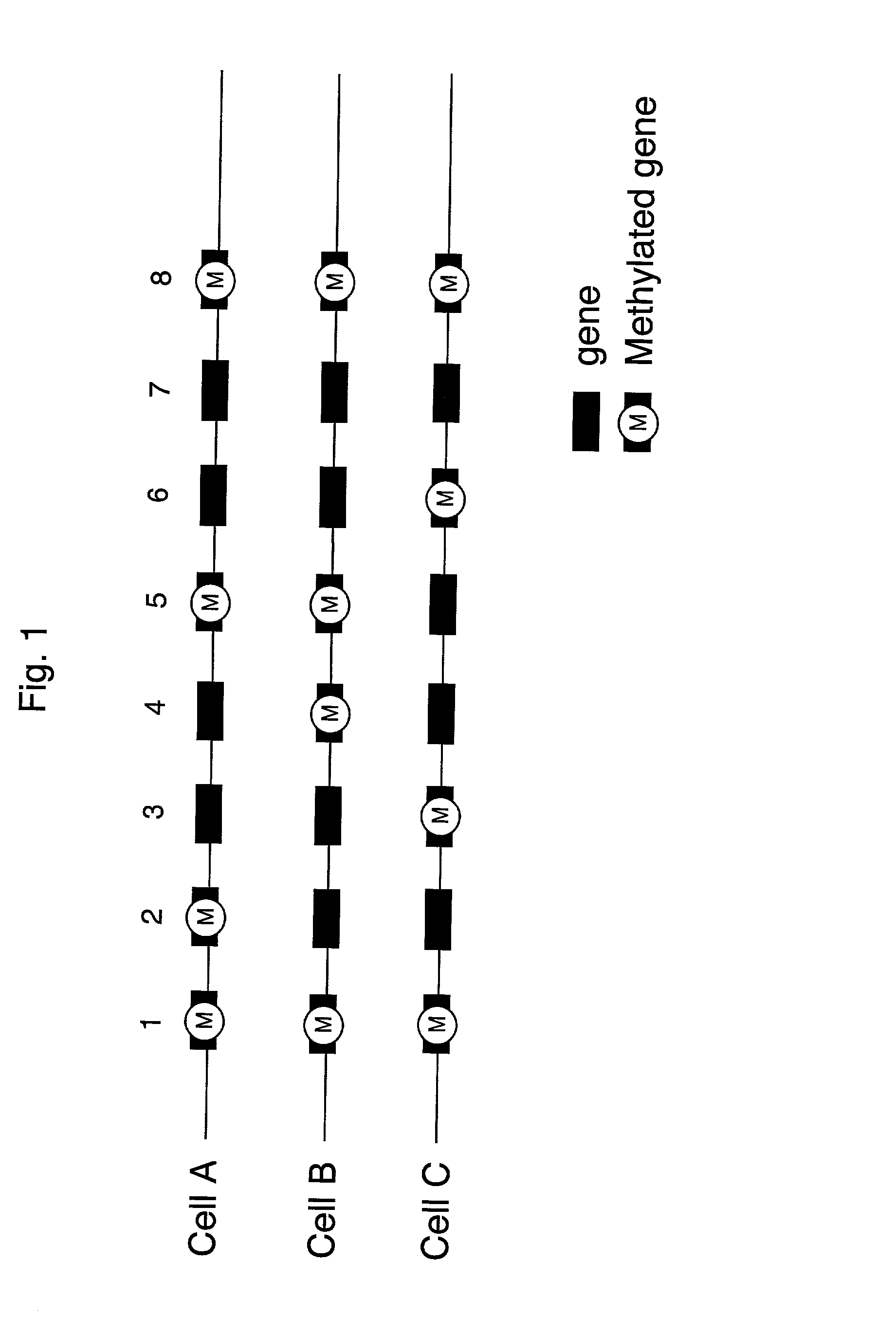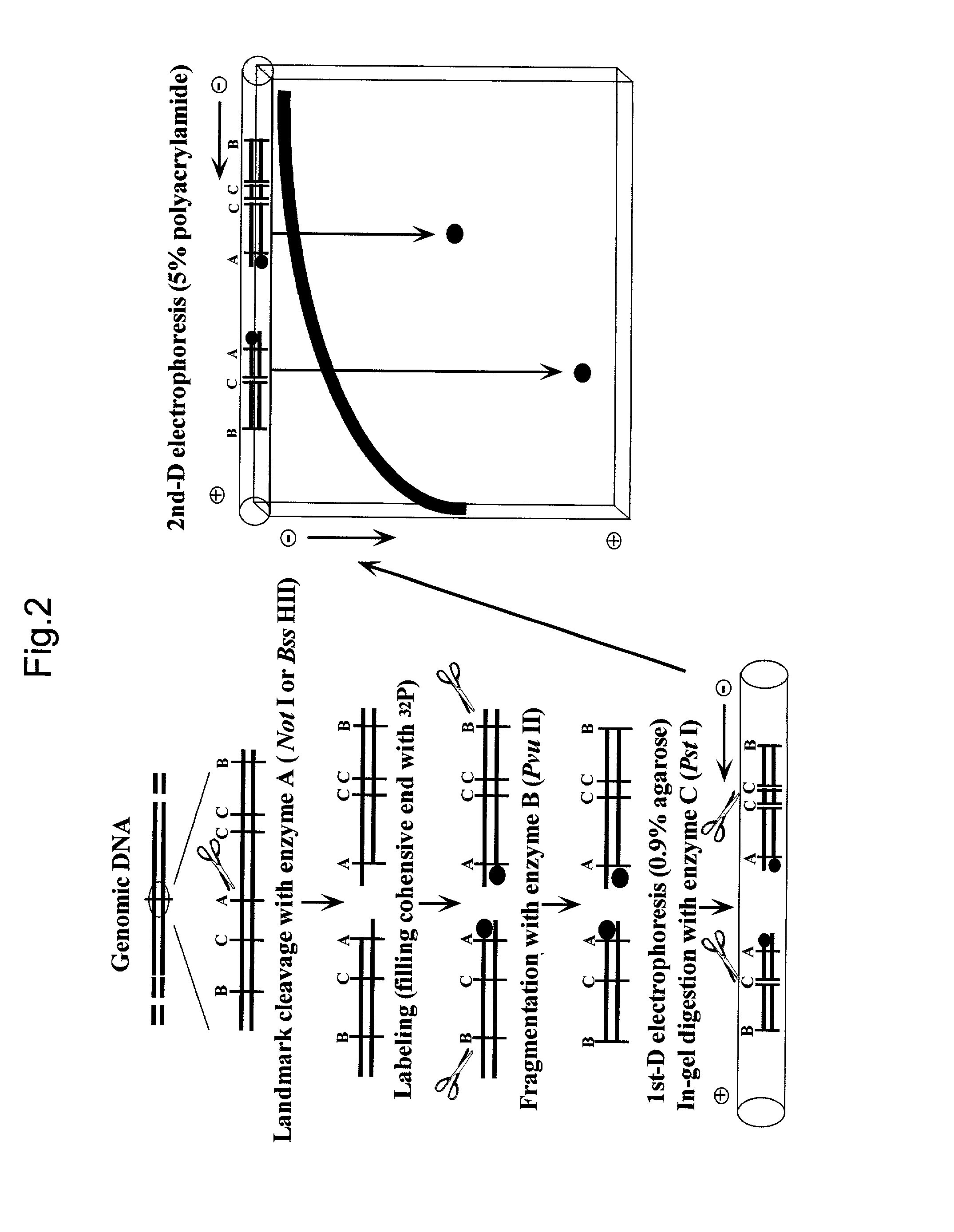Method of identifying cells using DNA methylation patterns
- Summary
- Abstract
- Description
- Claims
- Application Information
AI Technical Summary
Benefits of technology
Problems solved by technology
Method used
Image
Examples
example 1
Analysis of Methylation Patterns by the RLGS Technique
[0085] In this Example, methylation patterns were analyzed using the RLGS technique as one example.
[0086] (1) Preparation of Genomic DNA
[0087] Genomic DNA was prepared as described below according to known methods.
[0088] Each of frozen tissue (placenta, kidney and brain) and cell (embryonic stem cell, trophoblast stem cell and sperm) samples derived from C57BL / 6 mice (0.5-1 g) was suspended in 25 ml of lysis buffer (150 mM EDTA, 10 mM Tris-HCl, pH 8.0, 1% SDS) containing 10 mg / mil proteinase K (Merk). The mixture was incubated at 55.degree. C. for 20 min. Genomic DNA was extracted twice with equal volume of phenol / chloroform / isoamyl alcohol (50:49:1) and precipitated in ethanol. Then, the precipitate was dissolved in 200 .mu.l of TE solution (10 mM Tris-HCl, 1 mM EDTA, pH 7.6).
[0089] (2) RLGS Technique
[0090] Methylation of the carbon at 5' position of cytosine is the only chemical modification found in the genomic DNA of mammals....
example 2
Specification of Gene Regions
[0094] Genomic DNA was extracted from rat placenta, brain and kidney in basically the same manner as described in section (1), Example 1. Difference in methylation state in gene regions was detected. As a result, difference in methylation pattern was found in 24 genes out of 1033 genes.
[0095] Those genes in which difference in methylation pattern had been found were isolated. Their nucleotide sequences were searched through known databases. As a result, citrate transporter and estrogen sulfotransferase were identified as placenta-specific demethylated genes, and sphingolipid kinase and Frizzled as brain-specific demethylated genes.
[0096] All the publications, patents and patent applications cited in the present specification are incorporated herein by reference in their entireties.
PUM
 Login to View More
Login to View More Abstract
Description
Claims
Application Information
 Login to View More
Login to View More - R&D
- Intellectual Property
- Life Sciences
- Materials
- Tech Scout
- Unparalleled Data Quality
- Higher Quality Content
- 60% Fewer Hallucinations
Browse by: Latest US Patents, China's latest patents, Technical Efficacy Thesaurus, Application Domain, Technology Topic, Popular Technical Reports.
© 2025 PatSnap. All rights reserved.Legal|Privacy policy|Modern Slavery Act Transparency Statement|Sitemap|About US| Contact US: help@patsnap.com



